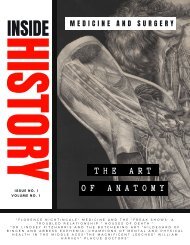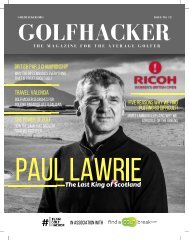Inside History: Protest. Revolt & Reform
For our next issue we take a closer look at the theme of Protest from the events of Peterloo to the fall of the Berlin. Inside we cover a whole range of historical protests and the individuals who led the charge for change. This issues includes: John Brown's raid on Harpers Ferry, The Suffragettes, Billie Holiday and the role music has played in protests, The Civil Rights Movement, Protest and Sport, We are the People: The Fall of the Berlin Wall, Bloody Sunday at Trafalgar Square, and much much more.
For our next issue we take a closer look at the theme of Protest from the events of Peterloo to the fall of the Berlin. Inside we cover a whole range of historical protests and the individuals who led the charge for change. This issues includes:
John Brown's raid on Harpers Ferry, The Suffragettes, Billie Holiday and the role music has played in protests, The Civil Rights Movement, Protest and Sport, We are the People: The Fall of the Berlin Wall, Bloody Sunday at Trafalgar Square, and much much more.
- No tags were found...
You also want an ePaper? Increase the reach of your titles
YUMPU automatically turns print PDFs into web optimized ePapers that Google loves.
When the war in Vietnam began, many Americans believed
that defending South Vietnam from Communist
encroachment was vital, and the “domino theory”
introduced by President Eisenhower must be stopped, to
prevent the spread of Communism in Asia. However, as the
protracted, counter-insurgency war persisted, many
American views started to adjust, as “winning the hearts
and minds of the Vietnamese people” appeared
preposterous. With 16,899 Americans dying from the war in
1968 alone, coupled with the introduction of the draft in
December 1969, protests were becoming rife and took a
vast number of forms.
portrayed in the song. ‘I Feel Like I'm Fixin to Die Rag’,
written by Country Joe MacDonald a few years after he was
discharged from the Navy, featured the bitter lyrics "you
can be the first one on your block to have your boy come
home in a box" were played again and again at rallies and
demonstrations.The power of the protest within this music
was poignant for many reasons, but most significantly for
the impact it had on people. It encouraged people to voice
their concerns and stand up for themselves and their core
beliefs, as well as the simple fact that it gave these people a
sense of belonging and eradicated their feeling of being
alone with these issues. With household names like John
Lennon protesting the war through the medium of music, it
gathered swathes of media coverage
and made the American government
aware of the deep resentment towards
the war of their people, and put intense
pressure on them to act, or face losing
any last drops of popularity they had
remaining.
The birth of the ‘hippy culture’ was also
very influential in protesting the
Vietnam war and inspiring many
protesting tracks. Hippies saw
mainstream authority as the origin of
all societies ills and they were bitterly
opposed to the Vietnam War and the
draft introduced by the government.
Although often not linked, the Rolling
Stones’ opening track in their album Let
It Bleed, “Gimme Shelter” was a hippy
inspired song that called for peace and
for America to stop the war in Vietnam.
One key form of protest which ignited even more
discontent and passionate outrage towards the war in
Vietnam and the American government was music. Sending
thousands of young men, the average age of the American
soldier famously being 19, to a world of horror and pain
that would live with them forever, caused protest music and
cries for peace through lyrics. John Lennon; Creedence
Clearwater Revival; Bob Dylan;Springsteen and Barry
McGuire amongst countless more, all clearly demonstrated
their disillusion and outrage with the war in ‘nam and their
powerful lyrics captivated millions of people around the
globe. These icons brought the resentment of the Vietnam
War to the forefront of the media as well as people’s minds.
Creedence Clearwater Revival’s most famous track,
Fortunate Son, references rich people who orchestrate
wars and then draft the poor to fight in them within its
lyrics and has quickly became an anti-war anthem,
resonating with many people, who as a result came
together to showcase their indignation at the exploitation
of the lower classes. Over two and a half million sales of
Fortunate Son show the extent to which the American
people could relate to the meaningful and strong message
Above left: Creedence Clearwater Revival in 1968. From left to right:
Tom Fogerty, Doug Clifford, Stu Cook and John Fogerty. (Public
Domain)
Above right: John Lennon and Yoko Ono. Nationaal Archief, the
Dutch National Archives (Public Domain)
50 INSIDE HISTORY

















